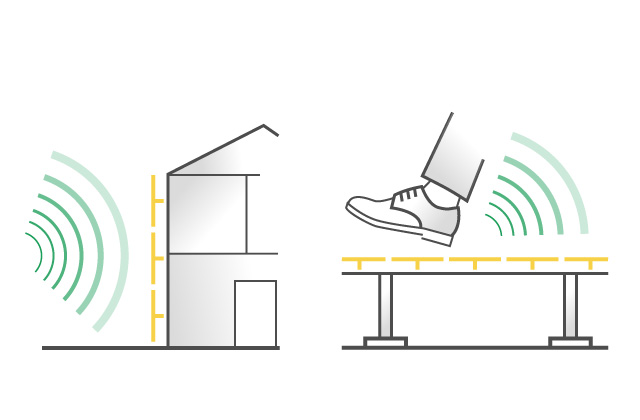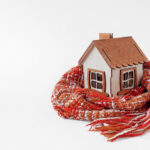
As you know, the comfort of a building depends on both structural and systems aspects: acoustic comfort falls under the former category, and is not a factor to be ignored. The acoustic conditions of an environment, meaning whether or not there are sounds and/or noises that can disturb or harm occupants during their stay, can even become a health risk, especially in the workplace.
The so-called noise climate, and the resulting construction choices, must be assessed right from the design stage, a stage in which consulting us on this topic could turn out to be useful, given the experience we have built up in thermoacoustic building protection, which can be seen at its best in the ventilated system.

Although the topic of acoustic protection in buildings has been discussed since the 50’s, the current technical reference standards for assessing, calculating and testing acoustic requirements and acoustic insulation in residential buildings are:
- EN ISO 16283 “Acoustics – Field measurement of sound insulation in buildings and of building elements”, of which we draw attention to:
Part 2 (2018): impact sound insulation, which describes a method for measuring impact sound insulation;
Part 3 (2016): façade sound insulation, which specifies procedures to determine the airborne sound insulation of façade elements and whole façades; - EN ISO 12354 “Building acoustics – Estimation of acoustic performance of buildings from the performance of elements”, of which we draw attention to:
Part 3 (2017): airborne sound insulation against outdoor sound, which specifies a calculation model to estimate the sound insulation of a façade. The calculation is based on the sound reduction index of the different elements from which the façade is constructed; - EN ISO 140-18:2007 “Acoustics – Measurement of sound insulation in buildings and of building elements” and specifically Part 18: “Laboratory measurement of sound generated by rainfall on building elements”;
- EN ISO 717:2013 “Rating of sound insulation in buildings and of building elements”, of which we draw attention to:
- UNI EN ISO 717:2013 “Acustica – Valutazione dell’isolamento acustico in edifici e di elementi di edificio”, di cui segnaliamo in particolare:
Part 1: airborne sound insulation, which defines single-number quantities for airborne sound insulation in buildings and of building elements such as walls, floors, doors, and windows considering the different sound level spectra of various noise sources such as noise sources inside a building and traffic outside a building;
Part 2: impact sound insulation, which defines single-number quantities for impact sound insulation in buildings and of floors. It also defines single-number quantities for the impact sound reduction of floor coverings and floating floors; - EN ISO 10052:2010 “Acoustics – Field measurements of airborne and impact sound insulation and of service equipment sound – Survey method”;
- UNI 11532-1:2018 “Internal characteristics of confined environments – Design methods and assessment techniques”;
- UNI 8199:2016 “Building acoustics – Acoustic testing of systems serving property units – Contractual guidelines and methods for measurement inside the environments served”;
- EN ISO 3382-2:2008 “Acoustics – Measurement of room acoustic parameters” and specifically Part 2: “Reverberation time in ordinary rooms”;
After this overview of the current standards on acoustic requirements in buildings, you can see that the way in which sound propagates in an environment depends on many factors, and there are also many technical/constructional ways of creating an acoustically well-insulated covering for a building.
Undoubtedly there is no perfect or standard system that can ensure acoustic comfort in every situation, but there are various types of material and many construction techniques that, when combined correctly, can better meet your specific needs.
Contact us to discover all our soundproofing solutions, but in the meantime download the insulation certificate attained by Imola Tecnica from the download area on our website, and take a look at it.



